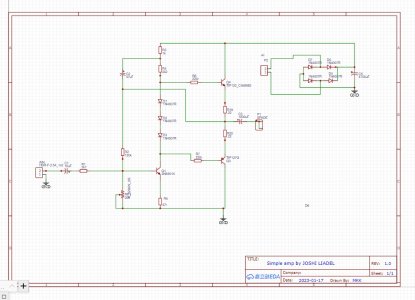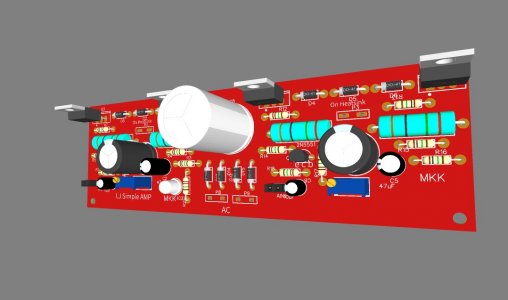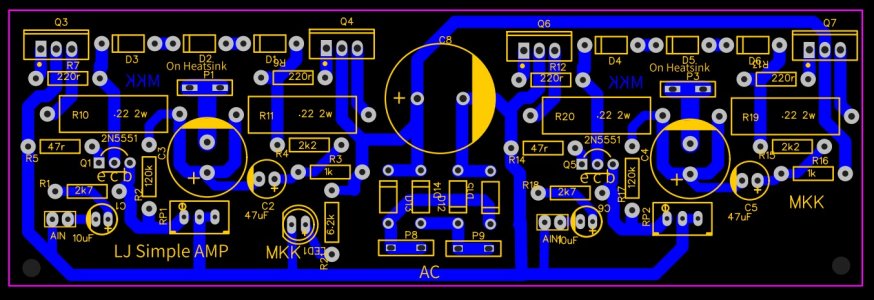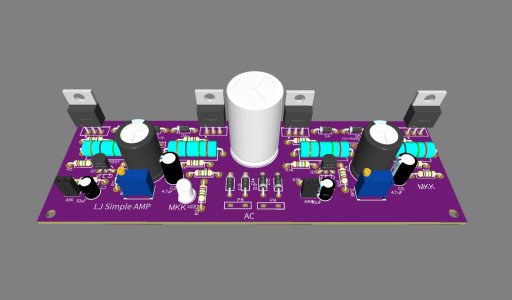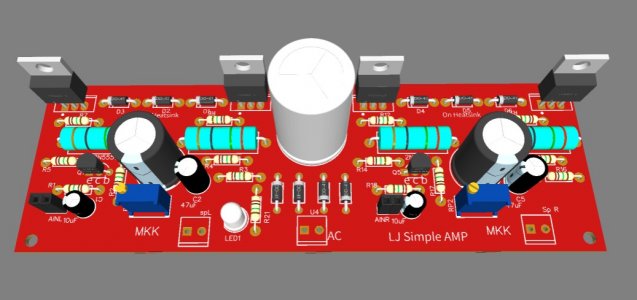Its a simple, straightforward circuit... a Bit too straight forward, I'm afraid (despite the bootstrapping by C-2).
A few touches would improve it vastly....
- A split rail power supply will eliminate the Output Capacitor. (3 dB down at 20 Hz).
- A preset across the 3 diodes will enable the quiescent current to be adjusted (without adjustments, it would be a bit (too) High 0.55 Amperes... Ideally should be around 0.02 amperes
- An additional input stage, would raise the input impedance from a rather low approx 5 K ohms to atleast 10K or preferably 20 K ohms
- The additional input stage would also enable a fixed Gain for the amplifier circuit... Currently it varies with the setting of the 20 K ohms preset.
- For 25 Watts RMS output the DC Voltage to the Output transistors needs to be atleast 45 Volts DC.
All the above & more can be calculated using ONLY Ohms Law and the formula for Impedance of a capacitor:
X = 1/ (2xPix Freq in Hz x Capacitance in Farads)
If there is an interest, I can run the calculations here.
